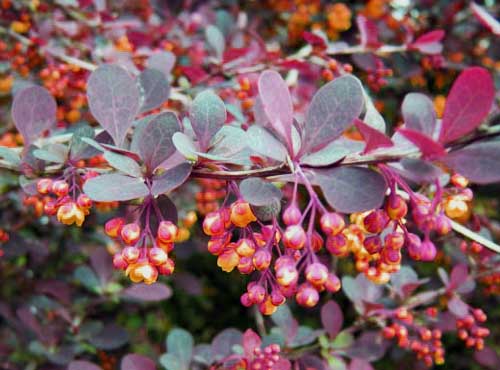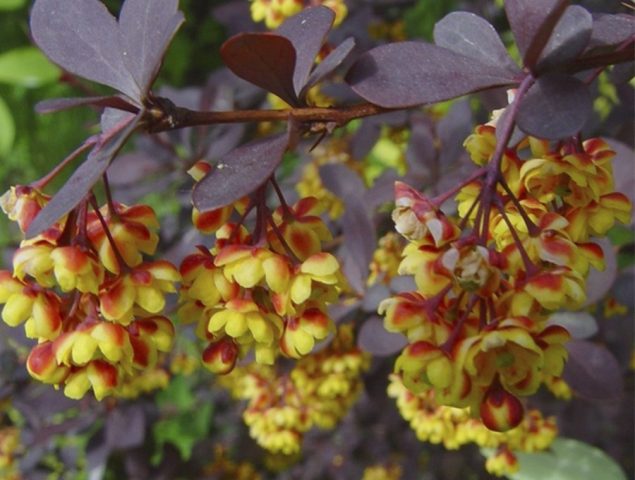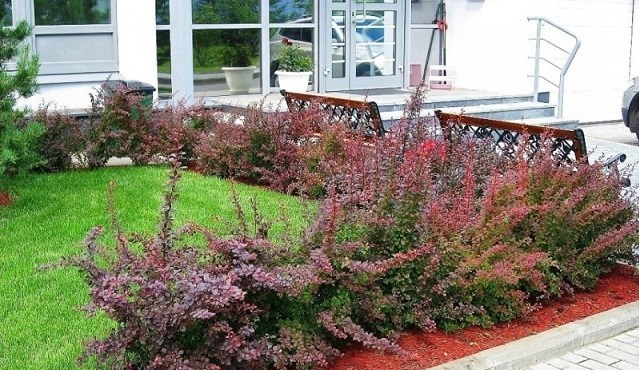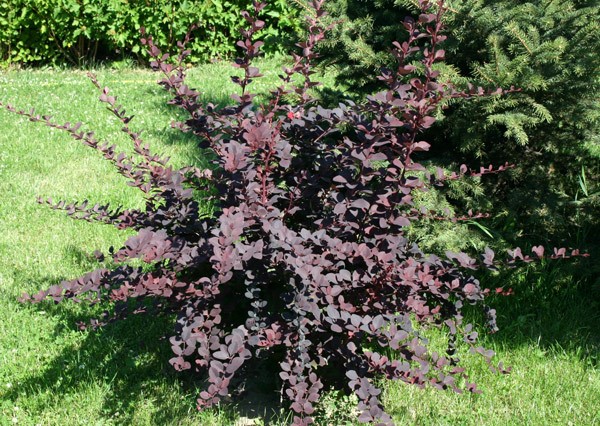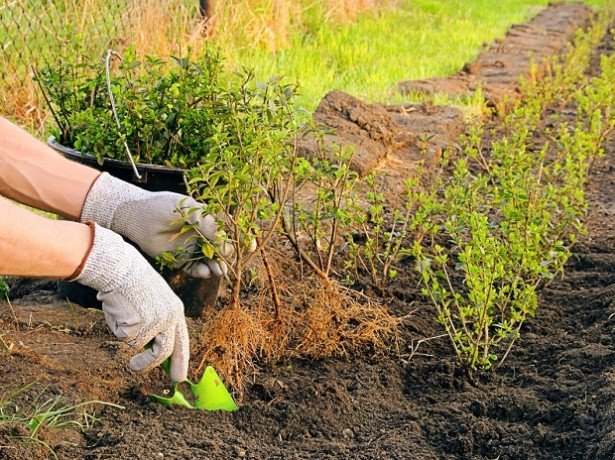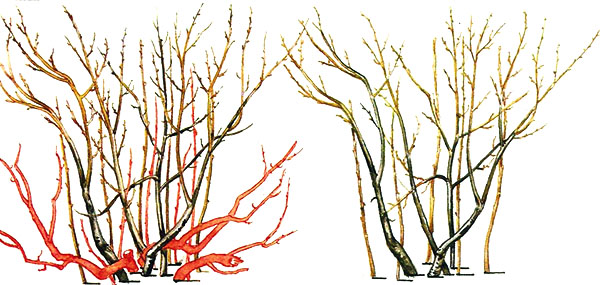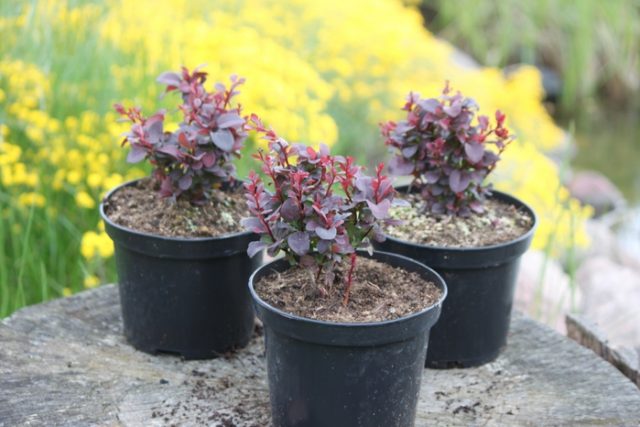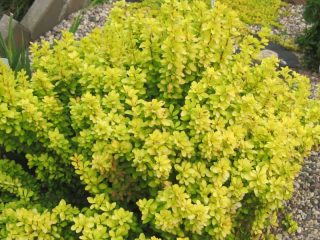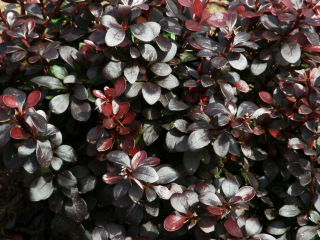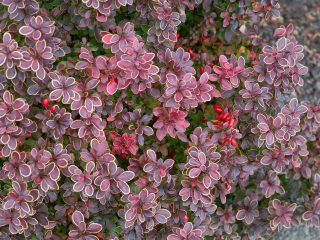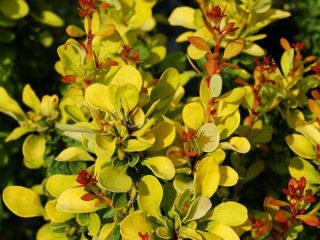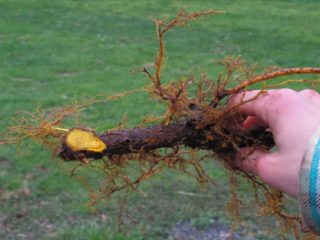Content
Ornamental shrubs can decorate even the most modest garden plot. Barberry Superba is a fast-growing perennial that not only has tasty fruits, but also has a rather attractive appearance.
Every gardener dreams of planting barberry bushes, because bright plants can create a colorful landscape composition in any garden. Knowing the nuances of planting and the rules for placing shrubs on the site, you can make caring for plants easier.
Description of barberry Superba
Barberry Superba grows as a large spreading shrub. The plant reaches its final size in 9 years. Barberry bushes are used for group plantings; single planting on a site is often practiced. The flowering period of the perennial plant is May-June.
Superba barberry flowers have a pleasant scent and are collected in neat racemose buds. There are up to 10 pieces on 1 brush. The color of the flowers is yellow with a reddish tint, length – 4 cm.
The crown is large and spreading, forming long growths over the years. At the beginning of growth, the branches are directed upward, and over time they stretch in wide arcs.The plant forms many branches on which there are sharp thorns.
The foliage of the Superba variety is round in shape, up to 4 cm long. The color of the green mass is purple-violet, with a grayish tint in summer. In spring, most leaves turn red.
The berries of barberry Superba are elongated, deep red in color, located on drooping branches. They are sour in taste and have a fairly pronounced aroma.
Barberry Thunberg Superba in landscape design
Barberry Thunberg Superba is quite popular in landscape design. Today there are more than 45 species of fruit bushes. This variety has good immunity to various diseases; unfortunately, it can hardly tolerate severe frosts.
Almost all varieties are used in landscape design. Thunberg barberry looks good both in single and group plantings of shrubs. It is planted near curbs and alpine hills. Thorny shrubs are used in the form of decorative hedges, which look original in the garden plot. In the photo you can see how Superba barberry looks in the design of the local area.
Planting and caring for barberry Superba
A perennial shrub does not require special planting conditions. The plant is more suitable for slightly acidic and alkaline soils. Barberry of this variety tolerates sudden changes in weather conditions well and is not afraid of long-term lack of watering.
Maintenance measures are standard: regular pruning and preventative spraying against insect pests.
Preparing seedlings and planting area
In order for the plant to form beautiful and long branches, it is important to prepare the right soil.The Superba variety is often planted in a pre-prepared soil mixture:
- humus;
- turf soil;
- sand.
All ingredients are mixed in equal proportions.
If planting is done in acidic soil, liming is necessary. For 1 plant take 35 g of slaked lime.
It will be important to prepare the seedling for planting. Before the procedure, the root is dipped into a growth stimulator. You can purchase this product at any garden store.
If planting material is purchased on the market, you should carefully inspect it. The seedling should not be damaged and the root system should not be overdried.
When preparing material for planting yourself, shoots of a perennial shrub with a strong, well-developed root system are taken.
Planting barberry Superba
Superba bushes love well-lit places. In them the plant will have bright colors. If barberry is intended to be planted in single plantings, it is recommended to make holes measuring 60 by 60 cm. When planting in groups, the minimum distance between bushes should be at least 40 cm.
Algorithm for planting barberry Superba:
- Dig deep holes.
- Place drainage stones or sawdust on the bottom.
- Add fertilizing: peat, humus.
- Lower the young seedling into the hole so that 2 cm of the root collar are above ground level.
- Provide abundant moisture to the plantings.
- Loosen the soil.
Watering and fertilizing
The perennial Superba practically does not require any special rules for fertilizing. They are brought under the bushes 1 year after planting. For the first feeding, urea is used. All subsequent fertilizers are performed once every 4-5 years.
It is worth noting that the shrub practically does not require watering.Often, young shoots that have a poorly developed root system need moisture. During the summer there will be quite a bit of rain. However, during prolonged drought, the shrubs should be provided with the necessary amount of liquid.
Trimming
Prune the bush in early spring. This event is a prevention of many diseases. Old, frozen and damaged shoots must be removed. It is not recommended to form a plant if there are many internodes on the bushes.
It is worth noting that shoots that have stopped growing are also subject to removal. Old plants also need to be thinned out in the spring.
The first preventative pruning is carried out 2 years after planting. During this period, the lower shoots are cut off. Further pruning is carried out 2 times a year: the first in summer, the second in early autumn.
Preparing for winter
Young bushes under 3 years old need preparation for winter. In the first years of life, it is necessary to cover the plantings with spruce branches. Further preparation for frost involves preventative pruning carried out the day before.
Reproduction
You can propagate the Superba barberry bush in 3 ways. The plant almost always takes root well. Each summer resident chooses a plant propagation method that is more convenient for him.
Reproduction methods:
- by dividing the bush. To perform this method, the young shoot is separated along with the root and planted in previously prepared soil;
- green layering. A good and strong shoot is identified on the bush, which is pressed tightly to the ground and covered. The plant is watered abundantly until the branch gives root;
- cuttings This method is easy to use. It is enough to find young strong shoots on the bush that need to be cut with a knife. The shoots are planted in prepared flowerpots and watered well. After the plant has developed a strong root system, it is transplanted into the ground.
Diseases and pests
Barberry Superba is susceptible to damage by barberry aphids and powdery mildew. To prevent bush disease, it is important to perform preventive pruning and treatment with special means. With proper care, the plant can develop good immunity, which will help avoid problems with care.
In case of illness, you should purchase special preparations at a garden store and carry out therapeutic spraying. To combat aphids, use a 0.2% solution of “Fitoverma”; if barberry is affected by powdery mildew, use “Fundazol”. Bordeaux mixture is used to treat rust.
Conclusion
Barberry Superba is an ornamental fruit shrub that is used for planting and landscaping. Group and individually planted bushes can create an interesting composition in any area. Bright perennial shrubs with fragrant fruits become a decoration of any garden. Practically requiring no care and no special planting rules, Superba barberry is the choice of those who love a beautifully designed garden without the expense and additional hassle.
